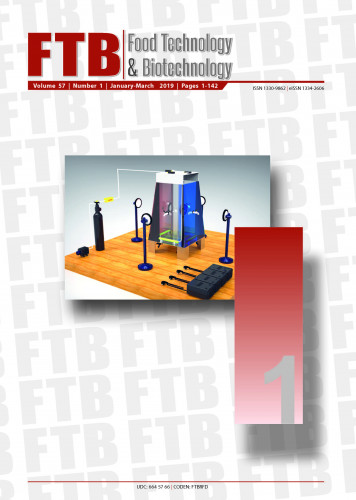Moringa stenopetala is a multipurpose plant having high nutritional and medicinal values. The aim of this study is to evaluate the effect of time and temperature of ultrasound-assisted extraction on bioactive compounds and antioxidant activities of M. stenopetala leaf extract. The ultrasound-assisted extraction took place at each of 30, 40 and 50 °C for 10, 20 and 30 min. The study also included the analysis of the interaction effects of time and temperature on the total phenolic content, total flavonoid content, antioxidant activity (ABTS and DPPH assay), FRAP and chelating activity. The highest total phenolic content, expressed in mg gallic acid equivalents per g dry mass, was 46.6 and total flavonoid content, expressed in mg catechin equivalents per g dry mass, was 20.4 at 40 °C for 20 min. Under the same conditions, the highest antioxidant activities evaluated by DPPH, ABTS and FRAP, expressed in mg Trolox equivalents per g dry mass, were 336.5, 581.8 and 133.3 respectively, and chelating activity, expressed in mg EDTA equivalents per g dry mass, was 28.4. The lowest amounts of bioactive compounds and antioxidant activities were observable when the extraction occurred at 50 °C for 30 min, followed by the extraction at lower temperature (30 °C) for shorter time (10 min). The morphological analysis of the residues obtained after extraction using scanning electron microscope indicated that there was a higher ultrasonic destruction of the structural components of the sample at longer extraction time. Therefore, ultrasound-assisted extraction at a temperature of 40 °C for 20 min is the best time-temperature combination to extract bioactive compounds from M. stenopetala leaves.; Moringa stenopetala je višenamjenska biljka s izraženim nutritivnim i terapeutskim svojstvima. Svrha je ovoga rada bila ispitati utjecaj vremena i temperature ekstrakcije potpomognute ultrazvukom na izdvajanje bioaktivnih spojeve i antioksidacijsku aktivnost ekstrakta lista biljke M. stenopetala. Ekstrakcija je provedena pri temperaturama od 30, 40 i 50 °C tijekom 10, 20 i 30 minuta. Ispitan je i međusobni utjecaj vremena i temperature ekstrakcije na ukupne udjele fenola i flavonoida, antioksidacijsku aktivnost (mjerenu pomoću ABTS, DPPH i FRAP metoda) i sposobnost keliranja Fe2+ iona. Nakon 20 min ekstrakcije pri 40 °C dobiven je najveći udjel ukupnih fenola u suhoj tvari, izražen kao ekvivalent galne kiseline, i to 46,6 mg/g, te najveći udjel ukupnih flavonoida u suhoj tvari, izražen kao ekvivalent katehina, i to 20,4 mg/g. Pri istim je uvjetima izmjerena najveća antioksidacijska aktivnost ekstrakata, izražena kao ekvivalent Troloxa u suhoj tvari, i to 336,5 mg/g prema DPPH metodi, 581 ,8 mg/g prema ABTS metodi i 1 33,3 mg/g prema FRAP metodi. Sposobnost keliranja, izražena u ekvivalentima EDTA u suhoj tvari, bila je 28,4 mg/g.
Sažetak

 Food technology and biotechnology : journal of the Faculty of Food Technology and Biotechnology, University of Zagreb, Zagreb, Croatia : 57,1(2019) / editor-in-chief Vladimir Mrša.
Food technology and biotechnology : journal of the Faculty of Food Technology and Biotechnology, University of Zagreb, Zagreb, Croatia : 57,1(2019) / editor-in-chief Vladimir Mrša.